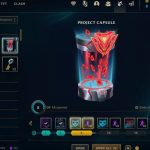Are you looking to dominate in CS:GO competitive matches? Well, look no further! In this comprehensive list, we’ve got all the essential information you need about the most popular competitive maps.
Dust II, Mirage, Inferno, Nuke, Train, Cache, Cobblestone, Vertigo, and even the lesser-known Agency – we’ve got it all covered for you.
Get ready to strategize, outsmart your opponents, and climb up the ranks with this expertly curated list of CS:GO competitive maps.
Key Takeaways
- Dust II and Mirage are popular maps in the competitive CS:GO scene.
- Map control and coordination are important for success on Inferno.
- Nuke is a challenging map with a unique layout and verticality.
- Train requires careful coordination and understanding of smokes for successful strategies.
Dust II
You’ll love playing Dust II because of its iconic status in the competitive CS:GO scene. Dust II has been a staple in the Counter-Strike franchise for years and continues to be one of the most popular maps in the game.
When it comes to finding the best weapons for Dust II, there are a few that stand out. The AK-47 and the AWP are both powerful choices for both terrorists and counter-terrorists. The AK-47 is a versatile rifle that can be deadly in the hands of a skilled player, while the AWP is a sniper rifle that can provide long-range cover and take down enemies with a single shot.
In terms of common strategies on Dust II, there are a few key tactics that players often employ. One popular strategy for terrorists is the ‘split’ strategy, where the team splits into two groups and attacks bombsites A and B simultaneously. This can catch counter-terrorists off guard and create chaos on the map.
On the other hand, counter-terrorists often utilize a strategy called ‘long control,’ where they establish control over the long A area and prevent terrorists from gaining access to the bombsite. This strategy can provide a strong defensive position and allow counter-terrorists to easily rotate to either bombsite as needed.
Overall, Dust II offers a variety of strategies and weapon choices for players to experiment with, making it a beloved map in the CS:GO competitive scene.
Mirage
Mirage is a popular map with a variety of strategic opportunities. When it comes to the B site retake, there are a few key strategies that can help you turn the tides in your favor.
One effective approach is to utilize utility to clear out common hiding spots and gain control of the site. Smokes and flashes can blind the enemy, creating opportunities for your team to push in and retake the site.
Another important aspect is communication. Coordinate with your teammates to ensure a synchronized retake, timing your pushes and providing cover for one another.
On the other hand, there are common mistakes that players often make on Mirage. Over-rotating is one of these mistakes. It’s crucial to maintain a balance between defending both the A and B sites, as over-committing to one site can leave the other vulnerable.
Failing to check all angles when retaking the B site is another mistake. Thoroughly clearing out all possible hiding spots is important to avoid being caught off guard.
Additionally, not utilizing utility effectively can hinder your chances of a successful retake. Make sure to use smokes, flashes, and molotovs strategically to gain an advantage over the enemy team.
Inferno
When it comes to map strategies for Inferno, it’s important to understand the balance between the Counter-Terrorist (CT) and Terrorist (T) sides.
As a CT, you’ll want to focus on controlling key areas like Banana and Apartments. You should also coordinate with your teammates to set up crossfires and rotations.
On the other hand, as a T, you’ll need to employ effective smoke grenades and flashes to gain map control. You should also execute well-coordinated pushes onto bombsites.
Finding the right balance between these two sides is crucial for success on Inferno.
Map Strategies for Inferno
Map strategies for Inferno can greatly impact the outcome of a CS:GO competitive match. Two key aspects to consider when formulating your strategy on Inferno are banana control and executing the A site. Banana control refers to the area near the T-side entrance to the B bombsite. Gaining control of banana can allow the T-side to apply pressure on the CTs and open up multiple avenues for attack. On the other hand, executing the A site requires precise coordination and utility usage. The terrorists need to clear out any CT defenders and plant the bomb successfully. To help you visualize the importance of these strategies, here is a table summarizing common tactics and their effectiveness:
| Strategy | Effectiveness |
|---|---|
| Banana Control | High |
| A Site Execution | Medium |
Balancing CT and T
Balancing CT and T sides is crucial for maintaining a competitive advantage in CS:GO. In order to achieve this balance, understanding map rotation and meta strategies is essential.
Map rotation refers to the coordinated movement of players between bombsites, ensuring that the defense is adequately distributed and flexible. On the CT side, rotating players efficiently can prevent the T side from exploiting weaknesses and catching defenders off guard. On the T side, understanding map rotation allows for strategic execution of attacks, capitalizing on the weakened defense.
Meta strategies, on the other hand, involve analyzing and adapting to the current trends and strategies employed by top teams. Staying up to date with the meta allows players to anticipate opponents’ moves and adjust their gameplay accordingly.
Nuke
If you’re looking for a challenging map, Nuke is definitely one you should try out. With its unique layout and strategic possibilities, Nuke offers an intense gameplay experience. Let’s dive into a map analysis and explore the balancing of this iconic Counter-Strike: Global Offensive (CS:GO) map.
-
Dual-Level Design: Nuke’s distinguishing feature is its dual-level design, with bombsites located on separate floors. This adds complexity to both the Terrorists’ and Counter-Terrorists’ strategies.
-
Verticality: The vertical nature of Nuke requires players to utilize grenades and smokes effectively, as they can block line of sight and deny access to crucial areas.
-
Rotations: The long rotations between bombsites make timing and communication crucial for both teams. Efficient decision-making and coordination are essential for success on Nuke.
-
CT-Sided Map: Historically, Nuke has been considered a CT-sided map, meaning the Counter-Terrorist team has an advantage. The tight spaces and multiple angles favor the defenders, making it challenging for the Terrorists to execute successful attacks.
-
Strategic Depth: Nuke offers a wide range of strategic possibilities, from aggressive pushes and flanks to well-coordinated executes. Mastering the intricacies of the map can give teams a significant edge.
Overall, Nuke’s unique design and challenging gameplay make it a favorite among competitive players. Its balance, although favoring the CT-side, provides opportunities for clever strategies and intense gameplay. So, if you’re up for a demanding and rewarding experience, give Nuke a shot.
Train
When discussing Train’s strategic layout, it is important to consider the map’s unique design and its impact on gameplay.
Train features a linear layout with three main lanes: the A site, the B site, and the central connector. This layout requires teams to carefully coordinate their rotations and control of these key areas in order to secure objectives and gain an advantage over the opposition.
Additionally, understanding the best smokes on Train is crucial for successful execution of strategies and creating opportunities for your team. Smokes can be used to block off crucial sightlines, deny the enemy information, or provide cover for bomb plants, making them an essential aspect of any team’s gameplay on Train.
Train’s Strategic Layout
Explore Train’s strategic layout by familiarizing yourself with the various chokepoints and positioning options available on the map. Understanding the timings and bombsite rotations on Train can give you a significant advantage in competitive play. Here are some key points to consider:
- Ivy: A long corridor on the outside of the bombsites, it is a common entry point for T-side players.
- Popdog: A small room near the B bombsite, it provides quick access to upper B and can catch defenders off guard.
- Connector: This narrow hallway connects the A and B bombsites, allowing for quick rotations and flanks.
- A Site: Watch for the ladder room and the bomb train, which can be used for effective post-plant positions.
- B Site: Keep an eye on upper and lower halls to prevent T-side players from planting the bomb.
Best Smokes on Train?
Now that you have a good understanding of Train’s strategic layout, let’s dive into the best smokes on this map.
Smokes are essential for blocking off key areas and creating opportunities for your team to advance.
One of the best pop flashes on Train is for the A site. By throwing a well-placed flashbang towards the site from T spawn, you can blind any CTs holding common angles and positions, giving your team the upper hand.
Additionally, there are several common angles and positions on Train that you should be aware of. For example, the CTs often hold the Ivy position, where they can easily spot any attackers pushing towards the B site.
Being aware of these angles and positions will help you effectively use your smokes and flashes to gain an advantage on Train.
Overpass
Overpass is one of the more strategically complex maps in the competitive CS:GO scene. Its unique layout and multiple paths make it a favorite among players looking for a challenge. The map has undergone several changes over the years, with each update bringing new strategies and gameplay opportunities.
-
Map changes:
-
Addition of the B connector tunnel, allowing for faster rotations and more aggressive plays.
-
Removal of the truck in the A bombsite, reducing the amount of cover for defenders and forcing them to adjust their positioning.
-
Adjustments to the water area, making it easier for terrorists to execute their strategies and gain control of the map.
-
Competitive advantages:
-
Overpass offers a wide range of options for both attackers and defenders, allowing teams to tailor their strategies to their play style.
-
The multiple paths and verticality of the map make it difficult for teams to predict their opponent’s movements, creating opportunities for surprise plays and tactical advantages.
-
The map’s layout also encourages communication and teamwork, as players need to coordinate their movements and rotations to control key areas effectively.
Overall, Overpass is a map that rewards strategic thinking and adaptability. Its ever-evolving nature keeps players on their toes and makes it a thrilling battleground for competitive CS:GO matches.
Cache
When discussing Cache, it’s important to delve into various aspects of the map.
Firstly, a cache layout analysis can provide valuable insights into the map’s design, highlighting key areas and chokepoints that players need to be aware of.
Additionally, exploring popular strategies on Cache can offer a deeper understanding of the tactical approaches teams use to gain an advantage.
Lastly, keeping up with updates and changes made to Cache is crucial for staying competitive, as these alterations can significantly impact gameplay and force teams to adapt their strategies accordingly.
Cache Layout Analysis
You can easily navigate through Cache’s layout to gain a strategic advantage over your opponents. The map’s design offers multiple routes and chokepoints that can be utilized to outsmart and outmaneuver your enemies.
Here are some key aspects to consider when analyzing Cache’s layout:
- Bombsites: Cache features two bombsites, A and B, each with their own unique characteristics and entry points.
- Mid Control: The middle area of the map, commonly referred to as ‘Mid,’ plays a crucial role in controlling the flow of the game and provides access to both bombsites.
- Boost Spots: Cache offers various boost spots that allow you to gain elevated positions, granting you a better line of sight and an advantage over your opponents.
- Rotations: Understanding the map’s rotation paths is essential for quick and effective movement between bombsites, maximizing your chances of success.
- Grenade Usage: Cache’s layout presents many opportunities for strategic grenade usage, such as smokes and flashes, to block off certain areas or blind your opponents.
Popular Strategies on Cache
Now that you have a good understanding of the layout of Cache, let’s dive into some popular strategies that teams often employ on this map. These strategies are designed to maximize your team’s chances of success and secure the round.
One of the most effective cache executes is the A bombsite take. This involves a coordinated effort to clear out the A site and plant the bomb. Teams often use smokes and flashes to block off key sightlines and blind defenders, allowing them to push onto the site safely. Once the bomb is planted, it’s crucial to hold off any retake attempts from the CTs.
Another popular strategy on Cache is the B split. This involves splitting the attacking forces between the B main entrance and the vents. This strategy is effective as it spreads out the defenders, making it harder for them to hold off the attack. It’s important to coordinate the timing of the split to catch the defenders off guard and gain control of the B site.
Updates and Changes
To stay up to date with the latest changes and updates to the Cache map, make sure to regularly check the official game forums and follow the developers’ social media accounts.
Here are some recent developments regarding map rotation and map pool changes:
- Cache has been temporarily removed from the active duty map pool for competitive play.
- The map has undergone significant updates and changes, including layout adjustments and visual enhancements.
- Valve, the developer of Counter-Strike: Global Offensive, has been actively seeking feedback from the community to improve the map.
- There have been discussions about potentially reintroducing Cache to the competitive map pool in the future.
- Other maps have been added or rotated in to replace Cache, providing players with new strategic opportunities.
Cobblestone
When playing on Cobblestone, it’s important to communicate with your team to effectively control the map. Cobblestone, a classic map in CS:GO, has undergone several changes and updates over the years to keep it fresh and balanced. These changes have made the map more dynamic and strategic, requiring players to adapt their gameplay accordingly.
One of the most notable updates to Cobblestone was the removal of the platform near the B bombsite, which forced teams to reevaluate their strategies and approach to the site. The strategic layout of Cobblestone now revolves around taking control of key areas such as the drop down, long A, and the B halls. It’s crucial to coordinate with your team to secure these areas and establish map control.
In terms of the best strategies for Cobblestone, it’s important to have a well-coordinated execution to either bombsite. For example, on the T side, a common strategy is to split the A bombsite by sending players through long A and drop down simultaneously. This puts pressure on the CTs and allows for a more successful entry onto the site. On the CT side, holding map control and playing passively can be effective, as it allows for better rotations and retakes.
Overall, Cobblestone requires strong communication, map control, and well-executed strategies to be successful. By utilizing these tactics, you can maximize your chances of winning on this iconic CS:GO map.
Vertigo
Vertigo’s unique vertical layout poses a challenge for players to navigate and control different levels of the map effectively. This makes it crucial to develop specific strategies to maximize your team’s chances of success on Vertigo.
Here are some key aspects to consider when analyzing the Vertigo map and planning your competitive strategies:
-
Elevators: Vertigo features two elevators that provide quick access to different levels of the map. Understanding how to use these elevators strategically can give your team a significant advantage in controlling key areas.
-
CT Control: As a Counter-Terrorist, maintaining control of the CT spawn and ramp area is crucial. This allows you to effectively defend both bomb sites and rotate quickly if needed.
-
T-Side Attacks: As a Terrorist, executing split attacks can be effective on Vertigo. By dividing your team into multiple groups and attacking from different angles, you can catch the CTs off guard and create openings for bomb plants.
-
Utility Usage: Proper utilization of utility is essential on Vertigo. Smokes, flashes, and molotovs can be used to deny CT vision, block off rotations, or flush out defenders. Mastering utility usage can give your team a significant advantage.
-
Map Control: Gaining and maintaining map control is crucial on Vertigo. By taking control of key areas such as the A ramp, B ramp, or mid connector, you can limit the CTs’ options and create opportunities for successful executions.
Agency
If you want to improve your gameplay on Agency, it’s important to understand the layout of the map and how to navigate it effectively. Agency is a popular map in Counter-Strike: Global Offensive that offers a unique setting and gameplay experience.
In this agency map review, we will explore the key aspects of the map and provide some useful gameplay tips.
Agency is a medium-sized map with two main areas: the Agency building and the outdoor courtyard. The Agency building consists of several floors, with multiple rooms and hallways. It offers a variety of angles and hiding spots that can be advantageous for both defenders and attackers. The outdoor courtyard, on the other hand, provides open spaces and long sightlines, making it ideal for snipers and long-range weapons.
To navigate Agency efficiently, it’s crucial to communicate with your teammates and coordinate your movements. The map offers multiple routes and flanking opportunities that can catch your opponents off guard. Additionally, understanding the positioning of the bomb sites and the common chokepoints will give you an edge in your strategy.
When playing on Agency, it’s important to utilize the verticality of the map. The different floors and staircases allow for creative plays and unexpected angles. Take advantage of the elevated positions to gain a better line of sight and control over the map.
In conclusion, understanding the layout and dynamics of Agency is essential for improving your gameplay. By familiarizing yourself with the map’s layout, communicating effectively with your team, and utilizing the verticality, you can gain a significant advantage over your opponents.
Frequently Asked Questions
What Are the Recommended Strategies for Each Map in CSGO Competitive?
To play each map effectively in CSGO competitive, it’s crucial to have recommended strategies. Tips for attacking and defending include mastering important spots and areas, as well as effective communication with your team.
Are There Any Specific Callouts or Map Locations That Players Should Be Aware of on Each Map?
To effectively control map control and rotations on each CSGO competitive map, it’s crucial to be aware of specific callouts and map locations. Communication and teamwork are key in utilizing these to gain an advantage.
Which Maps Are Considered More Ct-Sided or T-Sided in Competitive Play?
In competitive CSGO, the balance between CT-sided and T-sided maps greatly affects team strategies. The map layout can heavily favor one side, leading to different playstyles and tactics. Notable professional matches showcase this balance.
Are There Any Recent Updates or Changes to the Map Layouts That Players Should Know About?
Recent map updates have brought changes to the layout, affecting gameplay in CSGO. It’s crucial to stay updated on these changes as they can impact strategies, rotations, and overall team dynamics.
Are There Any Specific Weapon Loadouts or Utility Usage Tips That Are Particularly Effective on Each Map?
For each map in CSGO competitive, there are recommended weapon loadouts and utility usage tips that can greatly enhance your gameplay. Effective strategies vary depending on the map, so it’s crucial to familiarize yourself with each one.





